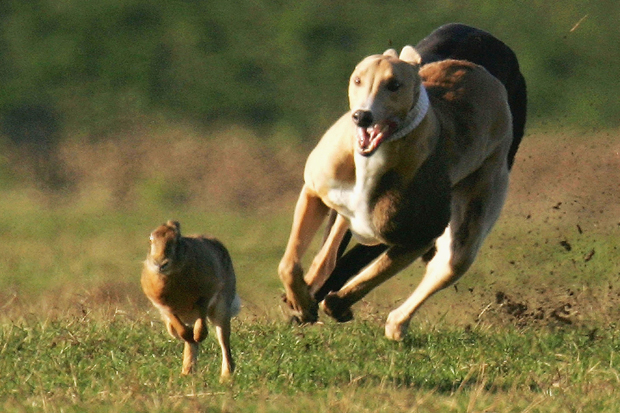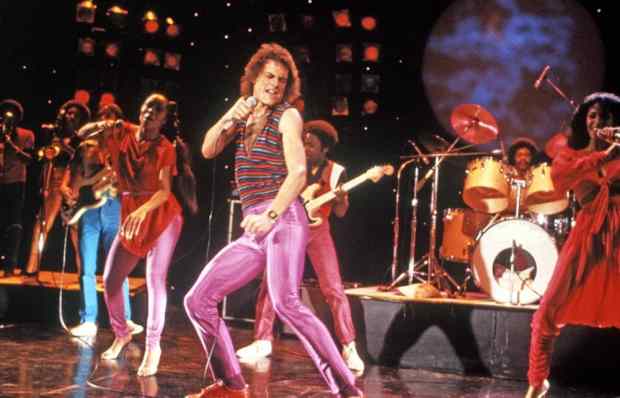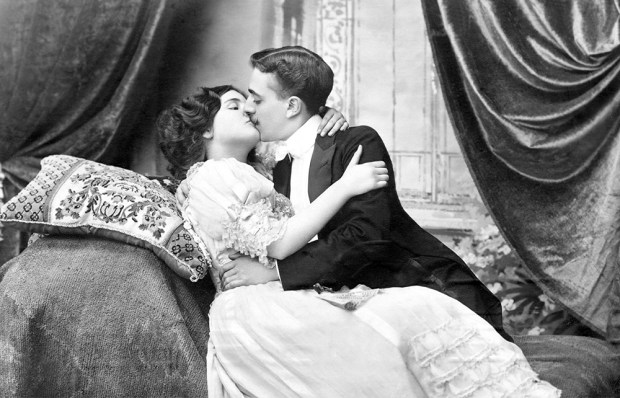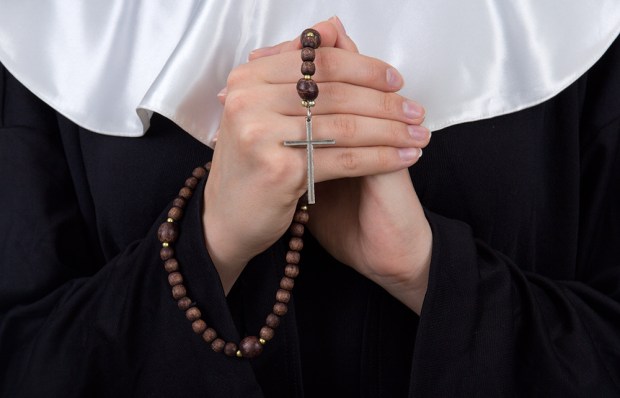Last week was the tenth anniversary of the last running of the English hare-coursing classic, the Waterloo Cup. I shan’t start raving on about the perversity of banning a so-called blood sport in which the death of the hare, should it happen, is seen as a failure. Suffice to say that in the last season of legal coursing under English Coursing Club rules, 160 hares were registered as killed — one in nine hares coursed. Three months after the Hunting Act had come into force, 8,000 conserved hares on ten coursing grounds had been shot, including 3,500 on the coursing grounds of the Swaffham Coursing Society (founded in 1776) alone.
In 1997 I was sent up to Great Altcar in Lancashire to report on the Waterloo Cup for a newspaper. To give me the best possible view of the action, the organisers put me in the ‘shy’ with the slipper. The ‘shy’ is a canvas screen hide past which the hares are driven by flag-waving beaters. The beaters encouraged individual hares to move forward by saying to them, ‘Ah! Ha!’ Knowing absolutely nothing, I crouched down out of sight clutching my notebook and biro.
The slipper that year was the great Garrett ‘Garry’ Kelly, slipper of 17 Waterloo Cups. Garry was dressed in cloth cap, hunting frock-coat, jodhpurs, jodhpur boots and ankle covers. While waiting for the first hare to be flushed, he and the coupled pair of coursing greyhounds stood quietly, the dogs’ skin crawling with anticipation. Then a hare made a bolt for it, shooting past the shy and across the open coursing ground. The crowd lining the grass bank roared. Once the dogs had clapped eyes on the hare, 180 pounds of sinew and muscle strained forward towards what has been the object of its desire for 3,000 years. Garry reined them in with all of his might but only partial success.
Now the slipper must tell at a glance if the hare is old, fat, injured, deformed or unwell. If she is any of these, he lets her go. A diarrhoea-encrusted rump, for example, is a laissez-passer. The only thing that will do is a fit hare that will test the dogs’ agility and stamina. If the hare is a good one, the slipper walks the madly bucking dogs out of the shy, and makes sure that both have the hare firmly in their sights. (The dogs’ eyeballs by this stage are nearly popping out of their sockets.) He ushers them forward, first slowly, then at a rush, until the hare has her regulation 80-yard start on them and the dogs are flowing like dolphins under the restraint of the leash. On the leaping greyhounds’ upbound, if possible, he slips them, and they are away and going faster than cheetahs, with four yards of leash uncurling in the air after them.
Great slippers are born, not made. Garry Kelly was a one-off. He was taught first by his father, who in turn learned slipping from the doyen of the Irish slippers Mick Horan. Garry was also taught by Jimmy Rimmer, who slipped the Waterloo Cup from the 1930s to the 1960s. Garry’s slipping style was his own: flamboyant, balletic even. To see him on tiptoe, arms elegantly outstretched, the leash snaking through the air in the wake of the stretching dogs, was to see the work of a master, and it produced in this onlooker, at least, the same feeling of emotion that the Spanish like to describe as duende.
It amazes me, now, to think that I was given the opportunity to spend the first day of the 1997 Waterloo Cup in the shy with Garry Kelly. You’d think he’d have been cheesed off at having to share his hide with an ignorant reporter. Not a bit of it. He talked to me as familiarly as if I were his old mother. If a course went on for too long, it always disturbed him. ‘Dear, oh dear, oh dear,’ he’d say to me after an usually long course. ‘They’ll sleep well tonight, those dogs.’
The last course of that last Waterloo Cup was a sort of tragedy. The dogs ran up and nailed the hare without a course. It would have been fitting, said Garry Kelly in his autobiography Champagne and Slippers, if the hare had run free. Instead of which, ‘the death of that hare symbolised the death of the British coursing tradition’. Garret ‘Garry’ Kelly’s own death last November, aged 63, was yet another sign that the ancient and very wonderful sport of hare-coursing died that day, and that in spite of continual half-promises by politicians of a free vote to repeal that ludicrous act of parliament.
Got something to add? Join the discussion and comment below.
Get 10 issues for just $10
Subscribe to The Spectator Australia today for the next 10 magazine issues, plus full online access, for just $10.
You might disagree with half of it, but you’ll enjoy reading all of it. Try your first month for free, then just $2 a week for the remainder of your first year.















Comments
Don't miss out
Join the conversation with other Spectator Australia readers. Subscribe to leave a comment.
SUBSCRIBEAlready a subscriber? Log in